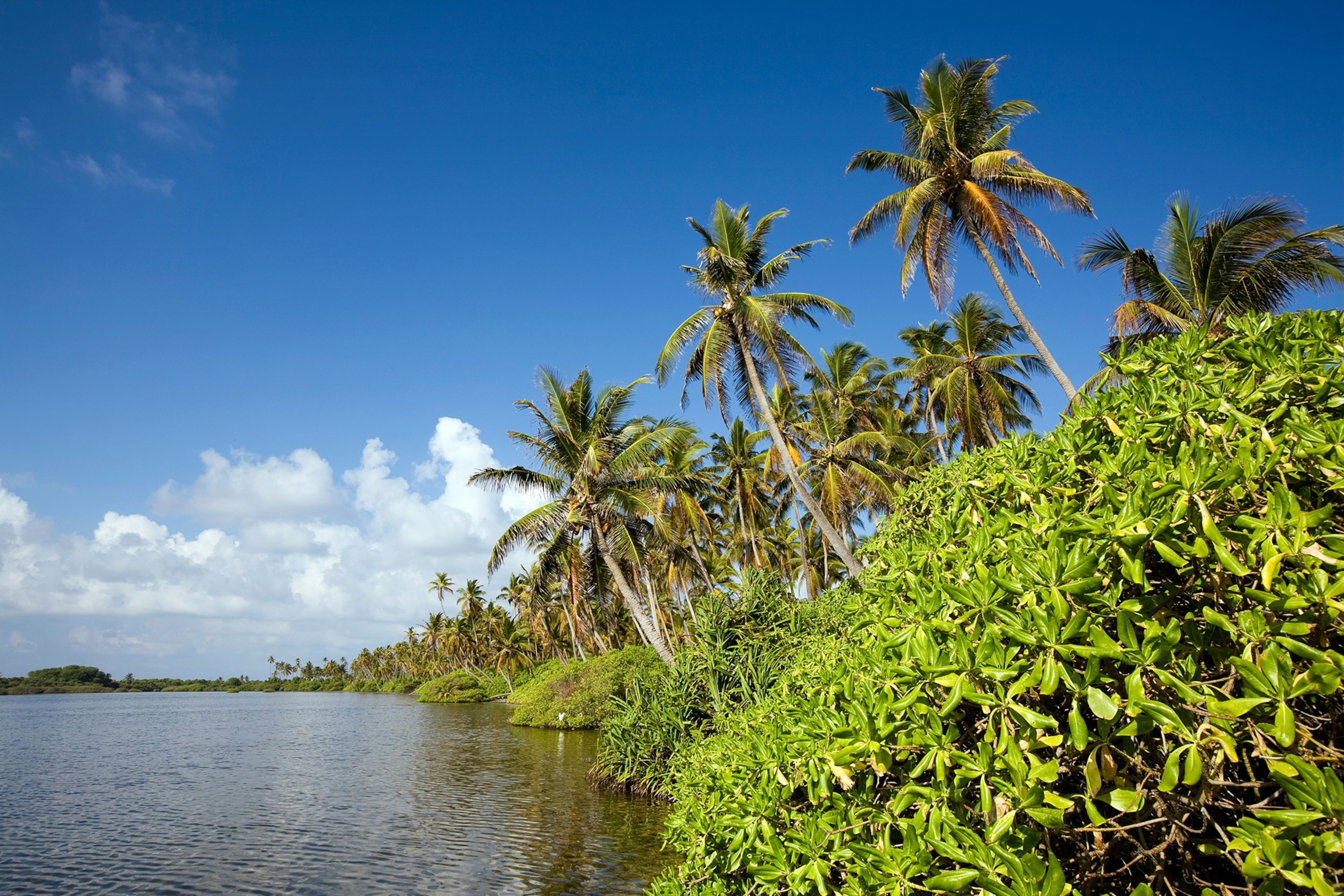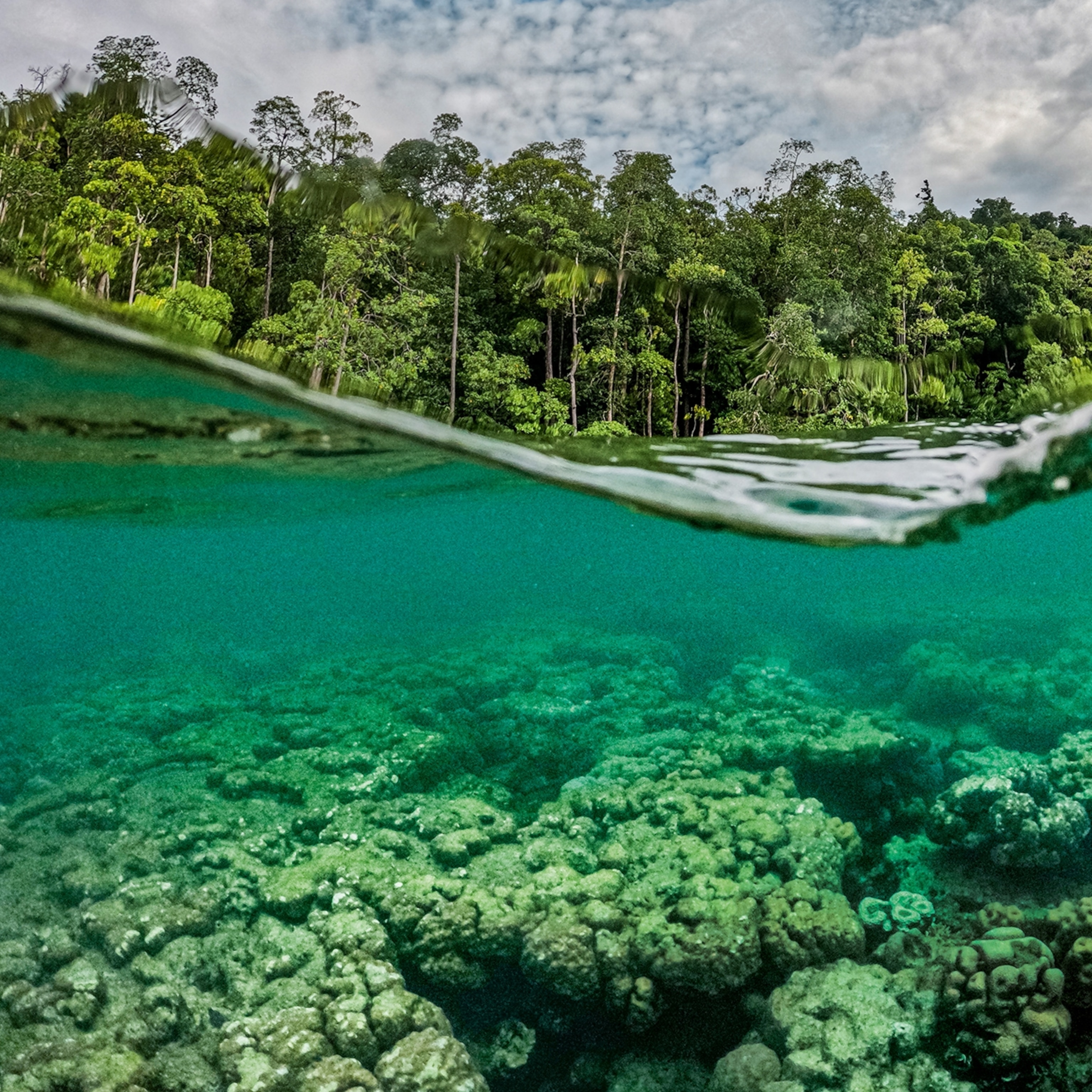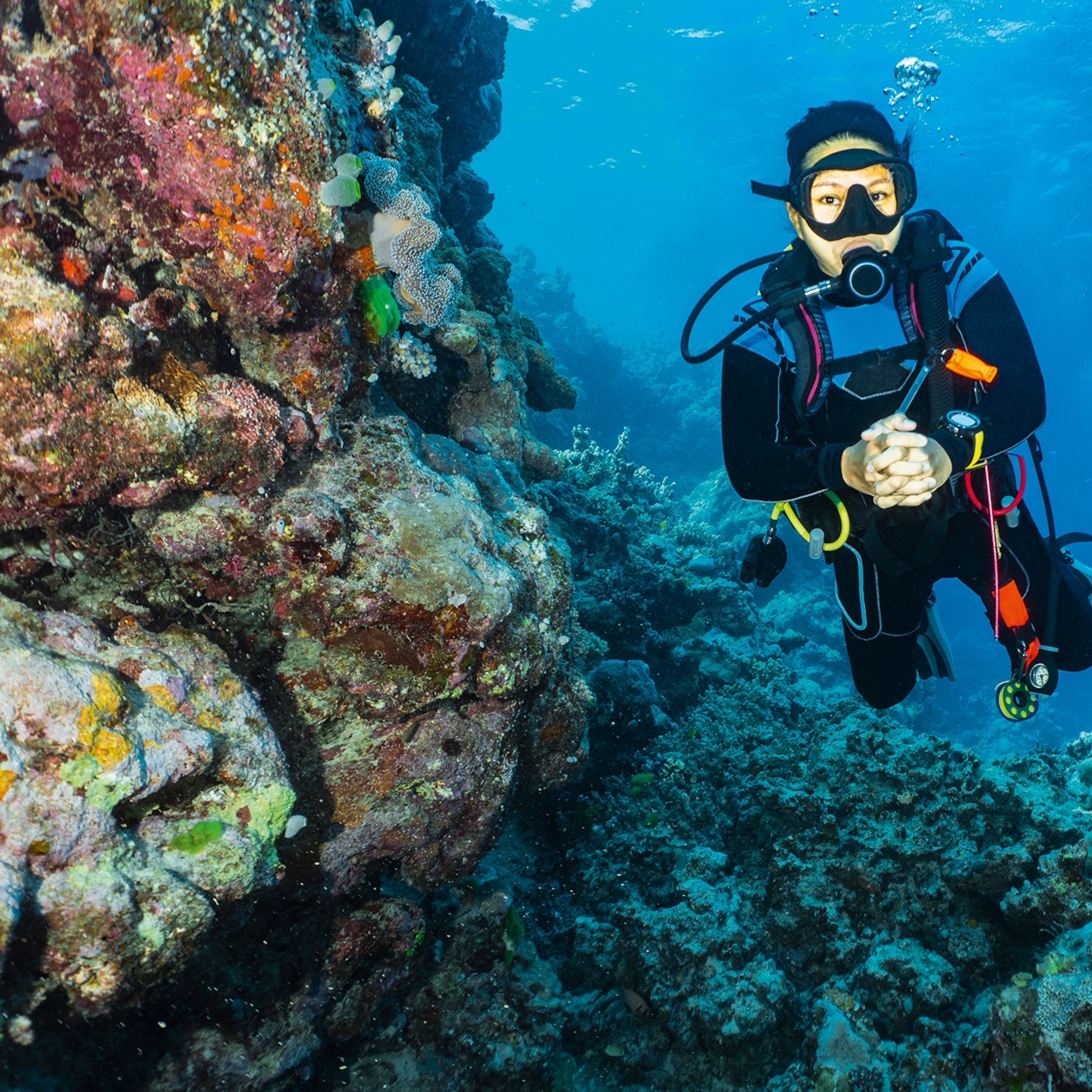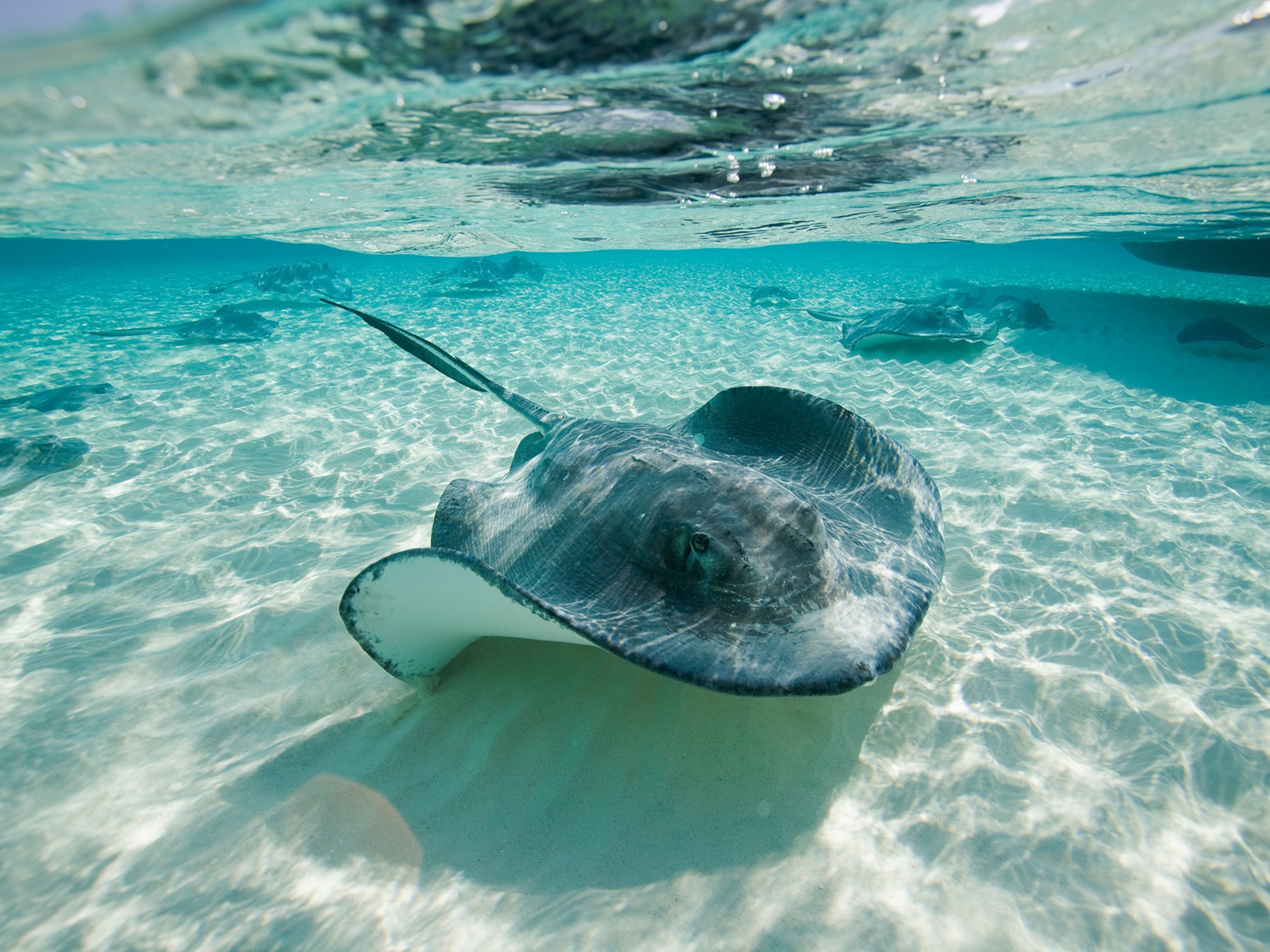Top 5 natural attractions in the Maldives
With more than 1,000 coral islands across the equator, the Maldives is home to a plethora of nature-based experiences. Here are five of our favourite destinations for exploring the natural wonders of this archipelago.

From sprawling mangroves to dive sites teeming with wildlife, this island country is ideal for adventurers and lovers of nature. To make the most of what’s on offer, visit the Maldives during the dry season, from December to April, when the weather is fair, the waters are glassy and marine life is abundant. This also includes the bird migratory season, when you’re most likely to see terns, sandpipers and plovers. However, if you’re a glut for lush green nature walks and more rugged island exploration, consider the shoulder months of May and November when there's cooler temperatures, a little more rainfall and less tourists. Here’s a look at five of the best nature spots across the islands to help plan your next visit.
1. Fulhadhoo Island, Southern Maalhosmadulu Atoll
Still considered under the radar, Fulhadhoo is a place where you have to slow down to nature’s pace. A small village is situated on the eastern side, while the rest of the island is left predominantly untouched, apart from a handful of small guesthouses. This island is home to sugary beaches, a shallow lagoon perfect for young swimmers and a coral garden, also known as the Rose Garden, which is situated around half a mile west of the island. With the help of the Maldives Coral Institute, the local community has been working hard to protect Fulhadhoo’s corals, which seem to be notably heat resilient. Fulhadhoo is still relatively untouched, meaning you can head out to the beach at night to see shooting stars aplenty. The island is only accessible via speedboat transfer and is situated 75 miles from Malé International Airport, and 25 miles from the domestic airport on Dharavandhoo.

2. Addu Nature Park, Hithadhoo, Addu Atoll
Addu Atoll is the southernmost atoll in the Maldives, and the island of Hithadhoo is home to the second largest natural mangrove forest in the country. It’s a birdwatcher’s dream — here you might spy the Maldivian plover, the white tern, the Indian reef heron or the great frigatebird, among others. The Addu Nature Park consists of the Eydhigali Kilhi wetlands and Koattey, meaning fortress, a protected area on Hithadhoo island. You can explore on foot, by bike, by golf cart or from the water — canoe in Bedhi Bay to get a closer look at its red mangroves and marine breeding grounds. Renowned for its extraordinary diversity, it's home to variants of terns, herons and egrets. Visitors can get a flight from Velana International Airport to the island of Gan, then take a car along the link road that connects the five inhabited islands of the western side of the Addu Atoll.
3. Baa Atoll Biosphere Reserve
The Baa Atoll Biosphere Reserve was officially designated as a UNESCO Biosphere Reserve in June 2011, and has since been carefully managed to ensure the protection of this unique ecosystem. It covers an area of approximately 540sq miles and hosts an extraordinary array of wildlife in its seagrass meadows, coral reefs and mangrove forests. You can reach the reserve by domestic flight, seaplane or speedboat, depending on where you’re staying. If you head out on a guided tour of the mangroves, you might spot some of the resident fruit bats, which play a key role in pollination. Perhaps most intriguing are the manta rays, which can sometimes be spotted in the waters of Hanifaru Bay between May and November. Snorkelling tours — no diving’s allowed — are led by certified guides who know how to observe these majestic creatures without causing disturbance or harm.

4. Six Senses Laamu, Laamu Atoll
The island of Olhuveli, in Laamu Atoll, is a shining haven complete with powdery beaches, azure waters and swaying palms. In 2021, the Laamu Atoll was designated as a Mission Blue Hope Spot, predominantly due to its carbon sequestering and marine life-rich sea meadows and mangroves. This has been largely down to the work of Six Senses Laamu and the Maldives Underwater Initiative, which have both focused on creating sustainable ecotourism offerings and tangible marine conservation efforts. The Six Senses Laamu Resort offers turtle watching experiences between May and August, as well as guided snorkelling trips with a certified marine biologist either on the house reef or seagrass meadows. There are also land-based citizen science workshops available with the Olive Ridley Project or the Manta Trust. Guests can take a 35-minute flight from Malé to Laamu’s Kadhdhoo Airport, after which they’ll be whisked off to the island via speedboat.
5. Dhunikolhu, Baa Atoll
There are a number of places in the Maldives where you might be able to see turtles, but Dhunikolhu has its very own Turtle Rescue Centre, run in collaboration with the Olive Ridley Project. Guests can visit the centre and learn more about turtle conservation, including rehabilitation after ghost gear entanglements, nest protection and identification processes. You can also explore Dhunikolhu’s vitreous waters with a trained marine biologist as your guide, meaning you can learn more about the species you’re observing. There’s also the option to get involved with the on-site coral nursery project, which sees broken pieces of coral collected and replanted in the island lagoon. The island of Dhunikolhu is home to the private Coco Palm resort, and can be accessed in 30 minutes via seaplane from Malé International Airport.
For more information, go to visitmaldives.com






